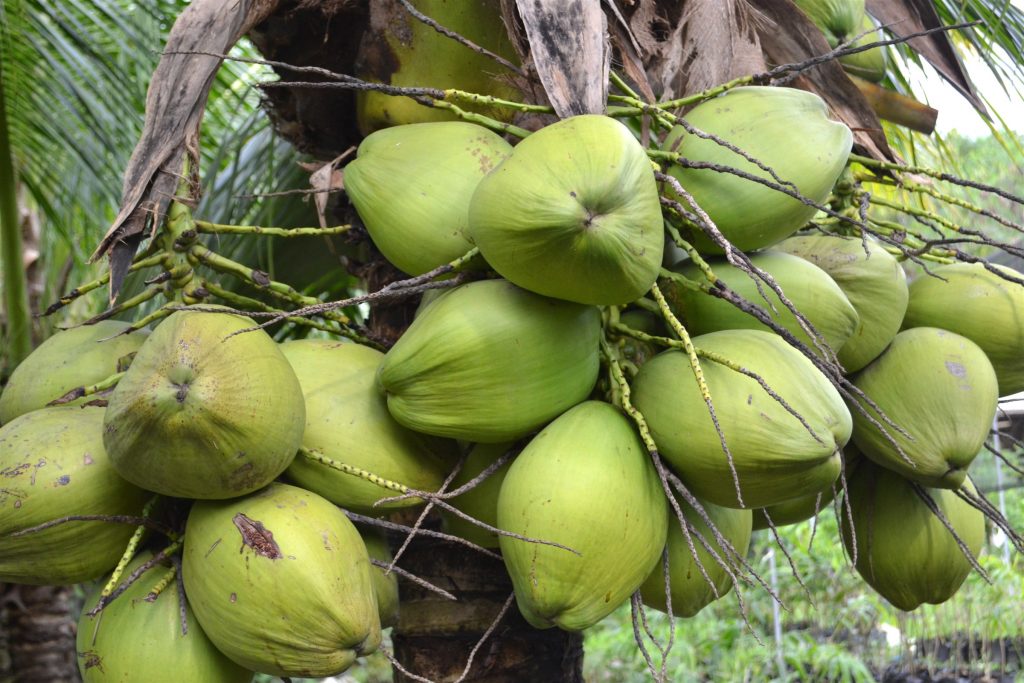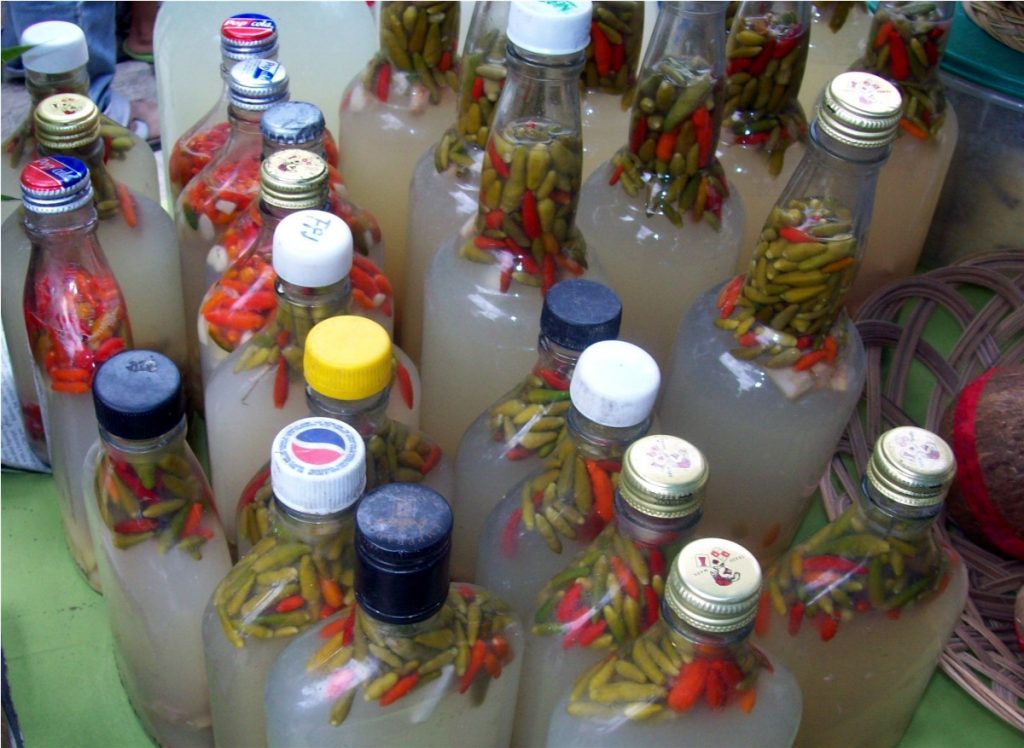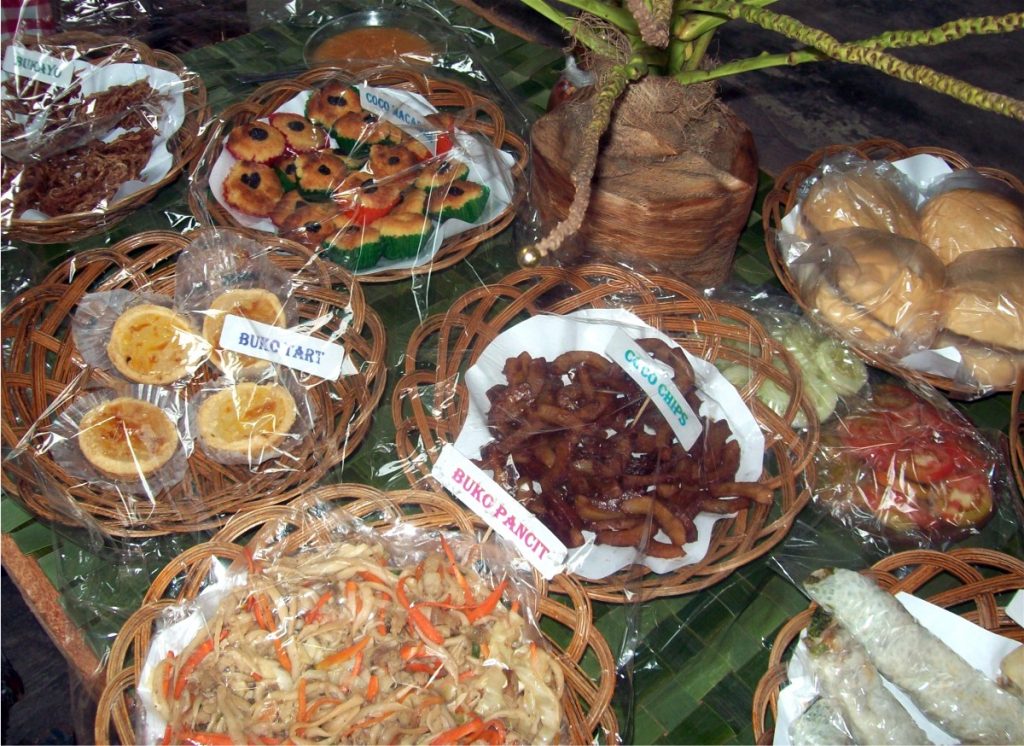Coconut has been touted as a “lazy man’s crop.” According to an old legend, coconut is God’s gift to the lazy man. “He sleeps in the shade of the tree, is awakened when a nut falls, drinks the milk, and eat some of the meat. He then feeds the rest of the meant to the chickens and cattle, which produce eggs and milk and meat, respectively. The leaves provide thatch for the roof and walls of his coconut hut, and are also woven into hats, baskets and mats.”

With multifarious uses, coconut is indeed a “tree of life.” In the Philippines, the coconut industry is a pillar of the country’s agriculture. But while most Filipinos know of coconut’s economic importance, not too many are aware of the health benefits coconut gives.
Let’s start with coconut milk, which is made from water and grated coconut meat. Coconut milk is said to be high in saturated fat but mostly in the form of medium-chain fatty acids, which are not metabolized the same as the long-chain fatty acids found in animal products.
As such, the fats found in coconut milk are not bad for your health, according to a 2006 article published in The Ceylon Medical Journal. As a matter of fact, it has been known that people with diets high in coconut milk have lower cholesterol levels and lower rates of heart disease.
Jill Corleone in an article which www.livestrong.com published, however, cautioned: “While there is some promising research about the benefits of coconut milk for your heart, the evidence is preliminary and more research is needed before formal recommendations for its use can be made.”
So, what about the fats from coconut oil? Pina LoGiudice, Siobhan Bleakney, and Peter Bongiorno, co-medical directors of the New York-based Inner Source Health, wrote: “Conventional thought used to consider fats like coconut oil to be unhealthy and contribute to heart disease. We now know that this isn’t true. In fact, coconut oil is actually a heart-healthy food that can keep your body running smoother in a few different ways.”
Virgin coconut oil

Coconut oil is most potent when it’s virgin – that is, extracted through pressing without the use of heat. Thanks to the pioneering work of the late Dr. Julian Banzon and his protégé, Dr. Teresita Espino, the chemistry of virgin coconut oil (VCO) has been known and its beneficial effects on the human body have been confirmed. Lauric acid is the key element in the VCO that is causing a lot of interest among scientists.
The late Dr. Dayrit was touted to be the Father of VCO. Thanks to his untiring and courageous effort in research on coconut oil, it was found that VCO is sort of a drug “that regulates the body’s functions and defense mechanism. It restores the normal balance of tissues or cells that have become dysfunctional.”
However, much research still has to be done on the benefits of VCO but preliminary findings and anecdotal reports are very promising. It reportedly removes toxins, manages diabetes, controls allergy, strengthens digestive system, and enhances immune system and body metabolism.
In the United States, for instance, VCO has increasingly become popular in natural food circles and with vegans. It was described in a New York Times article as having a “haunting, nutty, vanilla flavor” that also has a touch of sweetness that works well in baked goods, pastries, and sautés.
Records show that export of VCO has been increasing. An upsurge in the export volume was observed particularly in 2007. Export earnings of VCO increased by 235% from US$1.49 million in 2006 to almost US$5 million in the following year.
“The rapid growth rate can be attributed to the increasing cost of health care, aging population, growing evidence of health benefits of good ingredients, the food industry’s search for new opportunities, among others,” reports the Laguna-based Philippine Council for Agriculture, Aquatic and Natural Resources Research and Development (PCAARRD). “The VCO industry also benefitted on the increasing popularity of function food products both in local and the world market.”
Coconut vinegar

When it comes to vinegar, these names seem to be the most popular: apple cider vinegar, red wine vinegar, and balsamic vinegar. Most people, particularly those living in the Western countries, may never heard of coconut vinegar.
Although coconut vinegar is quite new in the United States market, it has been touted as the “new apple cider vinegar,” according to Andra Picincu in a Livestrong article. What most Americans don’t know that it has been sold already in most Asian stores. But due to its being natural and chemical-free, coconut vinegar is priced higher than ordinary ones.
It doesn’t take so much time to come up with vinegar out of coconut sap or tuba. The white liquid is placed in a tight container (although some would leave it uncovered to encourage yeast growth), and it would naturally ferment in several months.
As a type of fermented vinegar, coconut vinegar shares a common trait with the others. It’s also raw – ensuring that it contains all sorts of beneficial enzymes. The coconut sap, nutritionists claim, contains potassium (an impressive 192 milligrams per tablespoon), phosphorus, iron, magnesium, sulfur, boron, zinc, manganese and copper.
Coconut vinegar has some health benefits. Food and Nutrition Research, in a study published in 2017, reported that coconut water vinegar can decrease inflammation, body weight and blood lipids in obese mice.
Naturally fermented foods are rich in probiotics, according to Harvard Medical School. Coconut vinegar is no exception. “The live microorganisms that form in these foods through fermentation help restore the gut flora and may improve digestive health,” Picincu wrote.
Bukayo and Buko Pie

Who hasn’t tried bukayo, the very sweet Filipino dessert which is made by simmering strips of young, gelatinous coconut in water and then mixing with white or brown sugar? It can be used as garnishing and fillings for other desserts.
Buko pie, on the other hand, is a popular traditional pastry made of coconut-filled pie. It is almost like a coconut cream pie, only it is made of young 9-month-old-coconut and sweetened condensed milk mixed with skimmed milk and other ingredients.
Both are saleable but bukayo lasts longer. On the latter, the PCAARRD has this to say: “This product does not lose its appeal in the market because it is part of the Filipino culture. In fact, demand has been increasing due to the Filipino overseas workers, who like to bring the product along, thus expanding its market horizon.”
Carbon sequestration
The PCA and other government agencies are urging Filipinos to plant more coconuts in their farms. And by planting more coconuts, the Philippines can also help stave off the effects of climate change. “These coconut lands could be developed for income generating carbon sequestration projects and carbon credit market,” pointed out PCA’s Severino S. Magat.
Carbon sequestration describes long-term storage of carbon dioxide or other forms of carbon to either mitigate or defer global warming and avoid dangerous climate change. Carbon dioxide, in the form of gas, can be sequestered out of the atmosphere through photosynthesis. The carbon dioxide is converted into sugar by the plant or emitted back to the air through perspiration.
Carbon stored in plant parts other than the stem wood or trunk are generally decomposable biomass which eventually becomes a part of the soil organic matter (SOM) of which the more stable component is the 50 percent soil organic carbon (SOC).
In his paper presentation entitled, “Productive and Sustainable Coconut Farming Ecosystems as Potential Carbon Sinks in Climate Change Minimization: A Review and Advisory Notes,” Magat explained the important role of the coconut lands against the negative impacts of climate change.
In coconut, as in most tree crops, carbon is stored or sequestered both by the biomass and the soil of the ecosystem, indicating that the biomass and the soil are the main carbon sinks of atmospheric carbon dioxide. These “carbon sinks” could be regulated and managed to a great extent by following proper cropping practices, according to Magat.
A two-year study conducted by PCA showed the annual rate of carbon sequestration in local tall variety coconut crop is 4.78 tons carbon per hectare. That is equivalent to 17.54 tons of carbon dioxide per hectare, Magat claimed.
Unknowingly, coconut (scientific name: Cocos nucifera) is not a nut but a fruit. One of the oldest references to coconut is that of an Egyptian traveler who, in 545 A.D., wrote about a “nut of India” and sometimes as the “Indian nut.” Both the Spanish and Portuguese reported coconut in normal use as food in the Caribbean area previous to 1526. Later, in 1577 during a visit to Cape Verde Island, Sir Francis Drake frequently referred to the vast quantities available of “nargil,” the prevailing name of coconut.
It was not until 1775 that nargil was dropped and the word coconut became general in use. The name coco means “bugbear” or “hobgoblin” because of the grotesque face or mask of the shell.






